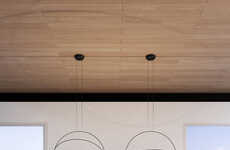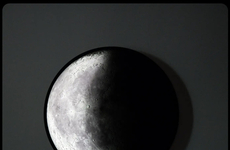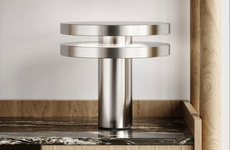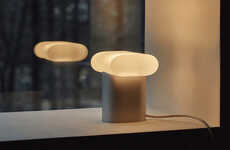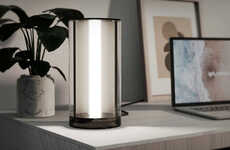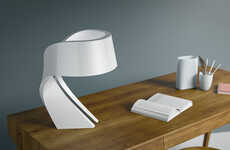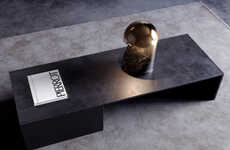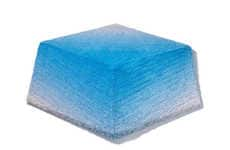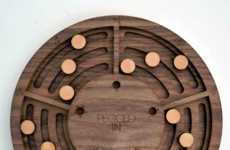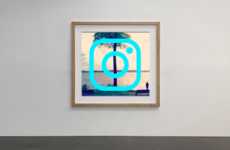
The Design of the Janus Lamp Takes Cues from Outer Space
Joey Haar — November 7, 2016 — Art & Design
References: trueing.co & design-milk
Brooklyn-based studio Trueing's Janus Lamp incorporates an inventive shape and scientific materials into its design. Looking superficially similar to a makeup mirror, the lamp actually uses a halo of dimming LEDs and a disc made of dichroic glass to cast bright and pleasingly hued light.
The Janus lamp takes its name from the Roman god Janus, who has two faces. That inspiration is fitting, since the lamp's disc of dichroic glass -- a material invented by scientists at NASA -- refracts the halo of light on both sides. Further, Saturn's outermost ring is named Janus, and that ring is imitated in the halo of LEDs that give off the lamp's gentle glow.
Because of the dichroic glass, Janus gives off a different quality of light depending on the precise angle and ambient light in the room, ensuring a unique cast whenever it's turned on.
The Janus lamp takes its name from the Roman god Janus, who has two faces. That inspiration is fitting, since the lamp's disc of dichroic glass -- a material invented by scientists at NASA -- refracts the halo of light on both sides. Further, Saturn's outermost ring is named Janus, and that ring is imitated in the halo of LEDs that give off the lamp's gentle glow.
Because of the dichroic glass, Janus gives off a different quality of light depending on the precise angle and ambient light in the room, ensuring a unique cast whenever it's turned on.
Trend Themes
1. Reflective Lighting Design - Incorporating scientific materials into lighting design can create unique reflective effects, prompting innovation in lighting design.
2. Nasa-inspired Materials - Adapting materials developed by scientists at NASA for commercial use can lead to highly inventive and unique designs.
3. Personalized Lighting Experience - Dichroic glass technology can create personalized and ever-changing lighting experiences, opening up possibilities for personalized lighting design.
Industry Implications
1. Interior Design - Incorporating dichroic glass and NASA-inspired materials in lighting design can help create unique interior design aesthetics.
2. Lighting Industry - The use of scientific materials can revolutionize lighting design and create new opportunities for innovation in lighting technology.
3. Tech Industry - The use of scientific materials in design, such as dichroic glass, opens new opportunities for tech companies to innovate in the field of lighting technology.
4.4
Score
Popularity
Activity
Freshness

